Prince Harry’s Apache pilot instructor: Duke was wrong to say how many people he killed

“People think we must be highly intelligent and have this square jaw like Maverick from Top Gun,” says Steve Jones. “But it’s nothing like that. We’re nothing special, we just happen to do a job that’s required. We’re not Supergods. We make mistakes. We suffer and we struggle. We do our bit.”
As an Apache helicopter pilot, you get used to being mythologised. In the 21st century, arguably no British fighting machine has had a more fearsome reputation than the American-designed attack helicopter, flown by the British Army Air Corps. Its crew are similarly lionised: pilots may not be Maverick, but must undergo a rigorous selection process. Training is estimated to cost more than £400,000 per pilot. Candidates have to demonstrate drive, flexibility, grit and determination, communication skills, the ability to interpret the weather and stay calm under pressure, as well as mastering the controls of a £50 million state-of-the-art war machine.
The prize of being selected is sitting in the cockpit of the most advanced attack helicopter in the world. From Afghanistan to Libya, wherever the Apache has been deployed, the sight of it thud-thudding over the horizon has been enough to scare off all but the most steadfast enemies. For those who decide to stand their ground, there is a M230 chain gun, rockets and Hellfire missiles. The Apache’s callsign is ‘Ugly’. It fits its squat, snub-nosed appearance and also the consequences of getting in its way.
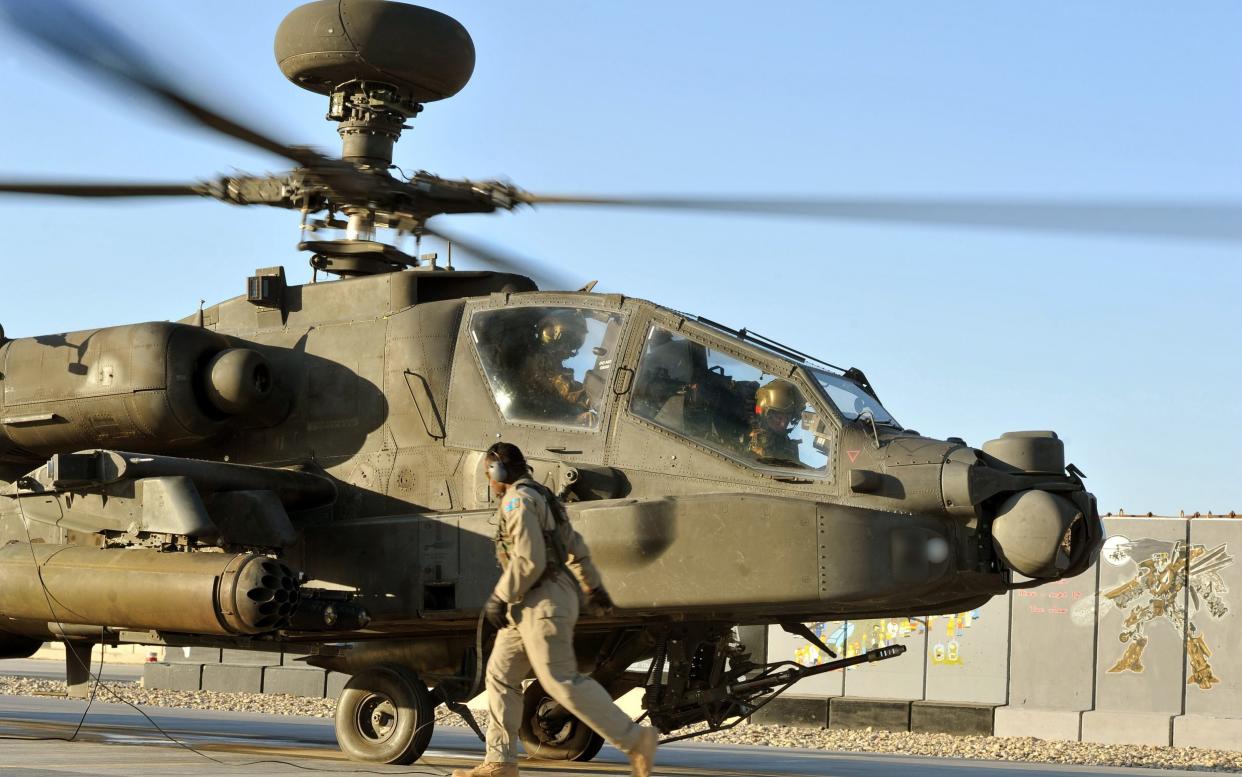
Jones, 53, has a more expert view than most. The son of a soldier, Jones served as a soldier in Northern Ireland before joining the Army Air Corps, where he spent three years as ground crew before training as a pilot. After training on Chipmunk fixed-wing aircraft and Lynx helicopters, he was admitted to just the third intake group of British Apache pilots – the aircraft was introduced in 2005. Jones flew with distinction in Afghanistan.
Jones has collected his experiences for Apache at War: Flying the World’s Deadliest Attack Helicopter in Combat, a memoir assembled from more than 700,000 words of diaries and recollection. They include his time training the most famous British Apache pilot, Prince Harry. After going to Afghanistan as an infantryman in 2008, the Duke trained as a pilot and returned as an Apache gunner in 2012, when he was 27.
“I remember the first time [Harry and I] met, in a briefing, it felt like he was briefing me,” Jones says, speaking over Zoom from his home in Aberdeenshire, where these days he flies commercial helicopters in the oil industry. “I was distracted, thinking ‘this is the third-in-line to the throne’. Then I thought ‘actually, he’s just another student. He doesn’t get any favours from me. If anything, he’s going to have to try harder.’
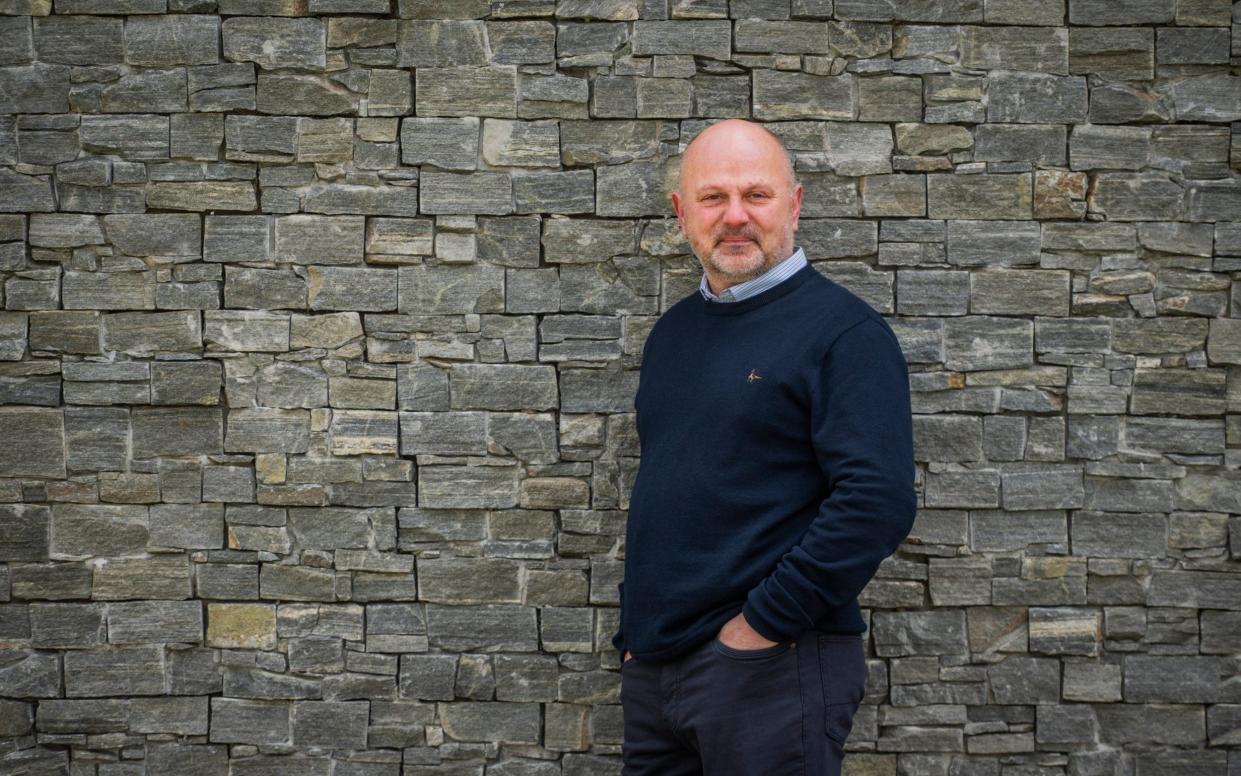
“I’ve had people say he only passed because of who he is. Nothing could be further from the truth. He definitely played hard, but he would work hard as well. He was a good student, but he tried to be a bit of a joker a few times and you’d have to slap him back down.”
Jones won’t be drawn into detail on the party-loving Prince’s extracurricular activities, except to say that he was always professional when it came time to knuckle down. “What happens in camp stays in camp,” he says. “But there was an occasion when we went down to Andover and we just wanted a few quiet beers, but obviously the message got out he was in the bar. And tens and tens of single women turned up, and you could hear Harry saying ‘oh, here we go again’.
“There’s an absolute zero tolerance of alcohol and flying, no grey area,” he adds. “But he was a young lad – it was when he finished his training that’s when the famous Las Vegas thing occurred.” In August 2012, photos emerged of the Prince enjoying a wild weekend in the Nevada city.
Yet if he was blowing off steam after intense training, there seems little doubt that the Prince’s time flying Apaches was a happy one. In interviews around the publication of his memoir, Spare, last year, he described his army career as his “calling” and that it “healed” him after the death of his mother.
“My military career saved me in many regards,” he told the American journalist Anderson Cooper, in an interview for 60 Minutes. “It got me out of the spotlight from the UK press.
“I was able to focus on a purpose larger than myself – to be wearing the same uniform as everybody else, to feel normal for the first time in my life, and accomplish some of the biggest challenges that I ever had.”
It chimes with Jones’ experience of the Prince. “I think when Harry was around the military he could relax a bit,” he says. “There was no fear of someone taking photos and telling the press what he was doing. He was relaxed enough to have a chat. He wouldn’t open up to me because I was the instructor, the sergeant major, and he was him, but we had mutual respect.
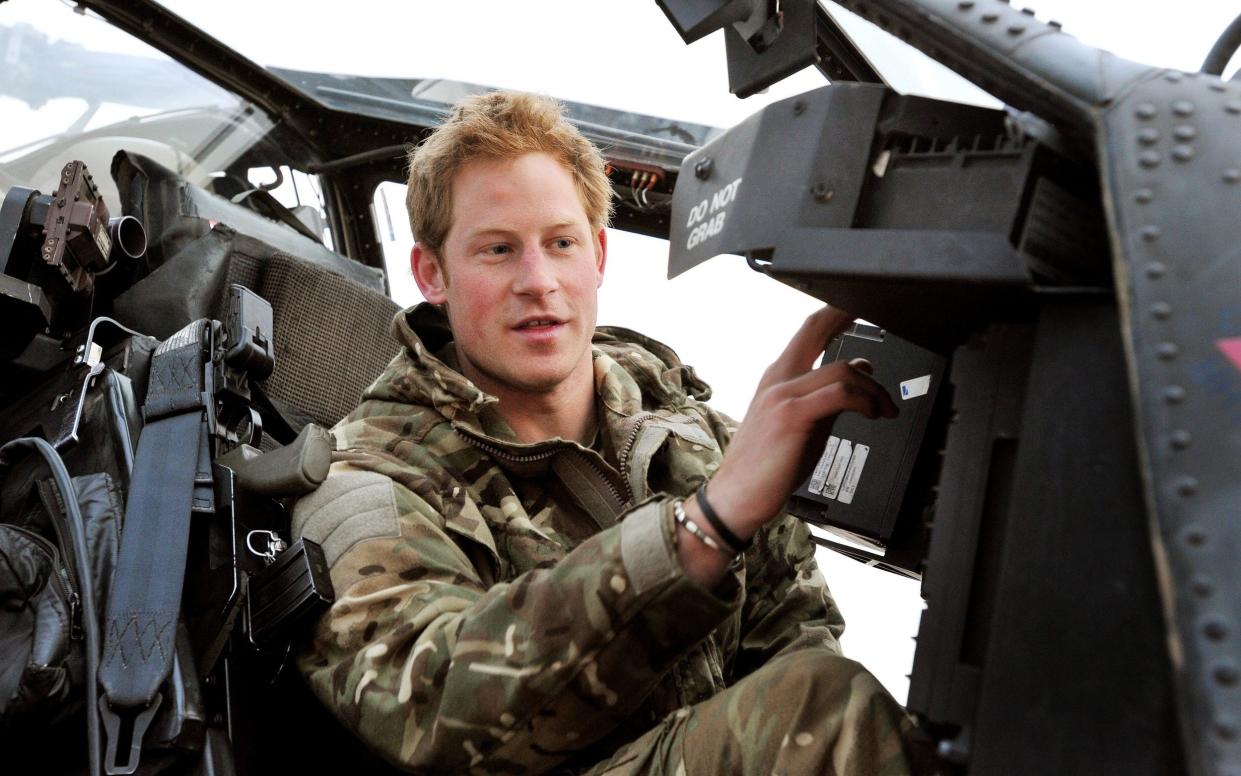
“He tended to concentrate on the smaller things, sometimes to the detriment of the bigger picture,” he adds. “He would try and be very picky and accurate. The whole world might be burning down behind him, but as long as he could get 35 knots [he would be happy]. It was about trying to get him out, start to relax, look at the periphery, see what’s going on and start to take in the wider picture. In an Apache you have to be three steps ahead. He was good at the finer detail but at times he was perhaps too narrow-minded and focused. But in the end he did really well.
“He was a joker, always up for a laugh. Sometimes he’d make a comment and you’d think ‘time and place, Harry’. He was just being a bit jovial. But there’s a right place and a wrong place.” The Prince was a “popular” student, Jones adds, especially with his course mates. With around 12 pilots per cohort, they are a “close knit” bunch.
Jones is more circumspect when it comes to the Duke of Sussex’s trajectory since he left the Army, abandoning his Royal duties, which included his military roles. “I do feel disappointed,” he says. “I feel gutted he’s not at the head of the military as he used to be. I’m grateful to have met him and flown with him. I think he has done his bit for his country. We can never take that away from him. He’s done an Apache course. He’ll always be one of us.”
Despite that, Jones says he was disappointed by Harry’s detailing in Spare that he had killed 25 Taliban fighters.
“Every kill was on video,” Harry wrote in the book, in reference to the nose cameras that the helicopters carry. “The Apache saw all. The camera in its nose recorded all. So, after every mission, there would be a careful review of that video.”
“I was part of six missions that ended in the taking of human life, and they were all deemed justified… I deemed them the same.”
“It’s not what we’re about,” says Jones, of the Duke’s putting a number on his kill count. “We’re not here to say, ‘I did this, I did that.’ It’s not a game. These are real people. They’ve got families. I wouldn’t have made any comment. I get a very uneasy feeling for anybody who says ‘I killed 10. It’s not what should be said, at all.
“But [Harry] did have a successful tour. It’s a shame he didn’t hang around to do more but I guess he ticked that box and scratched that itch and moved on. I would say he’s stepped backwards in a way, from the way he was to [how he is] now.”
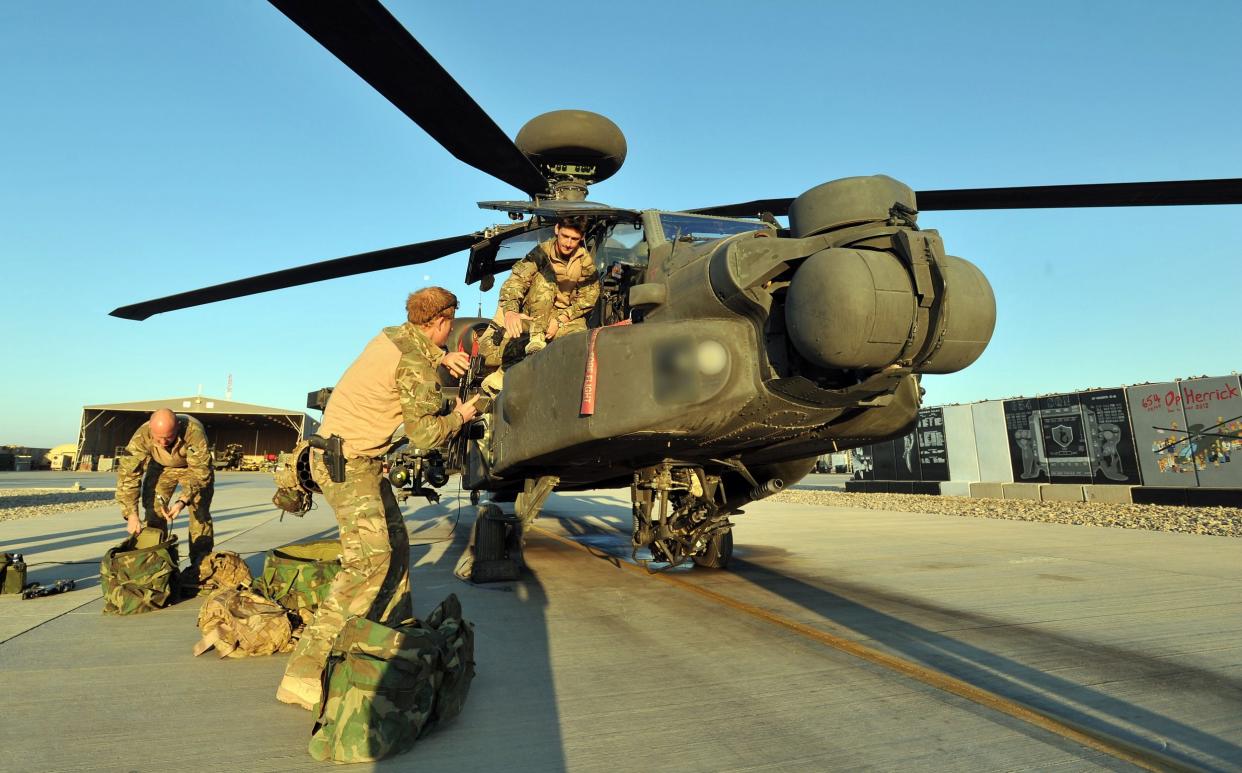
The Ministry of Defence selected the Apache in 1995, as a successor to the Lynx attack helicopter. Rather than the side-by-side seating arrangements of previous attack helicopters, the Apache had a forward and rear seating for its two operators, more reminiscent of a fighter jet. The American version of the helicopter had already proved itself in the first Gulf War. The British adapted it with Rolls-Royce engines and bespoke avionics, at the AgustaWestland factory in Somerset. It entered service in 2005 and almost immediately proved a vital asset in Afghanistan, despite a total programme cost of more than £4 billion.
“The Apache is fantastic,” Jones says. “It’s almost as if [defence chiefs] knew what was going to happen [in Afghanistan] and designed the aircraft around that. It’s completely armoured, a flying tank. There’s armoured glass, armoured seats, with two-of-everything. It’s designed to survive. Civilian helicopters are designed to be smooth for the passengers. With the Apache they take out all the home comforts. It’s rugged. I was glad I was in an Apache rather than a Chinook or a Sea King.”
The missions Jones flew in Afghanistan ranged from rapid response, flying to help out soldiers on the ground who found themselves under fire, to supporting special forces on pre-planned missions, or escorting Chinooks which were evacuating wounded troops. One incident in particular sticks in his mind: the battle over Rahim Kalay, Helmand Province, on June 6 2007. He provided close support for a Company of the 1st Battalion, Worcestershire and Sherwood Foresters Regiment, as well as a group of Czech soldiers, who found themselves under heavy fire from concealed positions.
“It started off as just another mundane sortie, then we wondered what someone was doing, and then it was like ants – it just kicked off everywhere,” Jones recalls. “It was busy everywhere we looked, we were getting pulled in all directions. We returned with very little ammunition. It wasn’t until afterwards that we realised the carnage that would have been waiting for them. It would have been a massacre.”
Nearly a decade after he left the army, Jones is safe in the commercial industry, flying helicopters out to the oil rigs in the North Sea off the coast of Aberdeen. But he has not forgotten his time in the Apaches. He has a “man cave” at the home he shares with his wife Stacey (he has an adult daughter from a previous marriage), which is decorated with pictures and other memorabilia, including a photograph with the Prince.
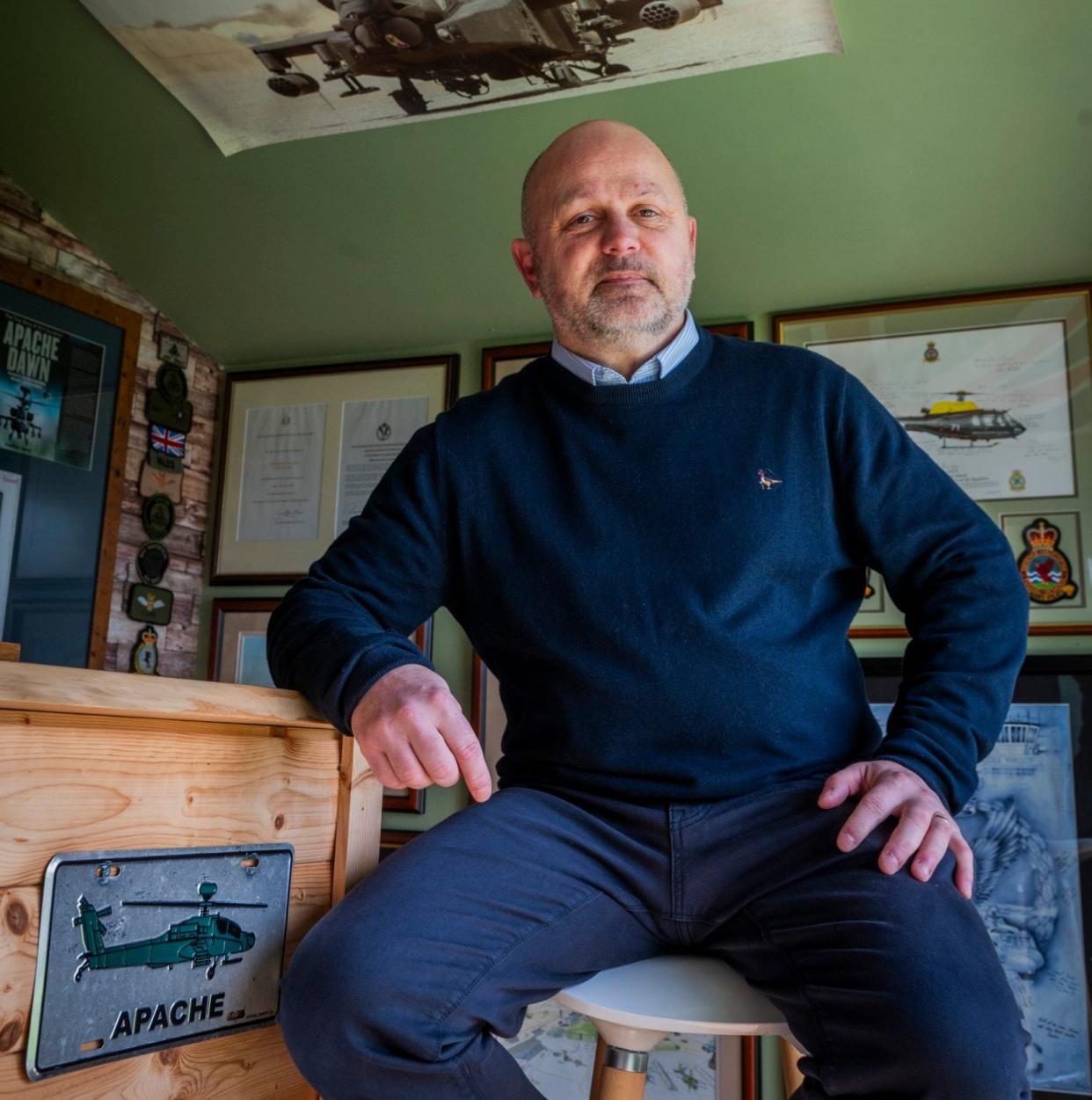
“It’s my little reminiscence place,” he says. “It looks out onto open ground, so when the sun sets, it reminds me of a few occasions when I was airborne in the Apache.
“Nothing is ever going to compare to military flying. Nothing is going to compare to Afghanistan. But I can’t sit here and go ‘what if’, because it’s not the case. It was a great time in my life, but life goes on.”
One wonders if Prince Harry, sitting in cosseted comfort in California, does not sometimes miss the armoured cockpit of his Apache, too.
Apache At War by Steve Jones is published on May 9 by John Blake at £22 in hardback, eBook and audio, and is available to preorder now.


